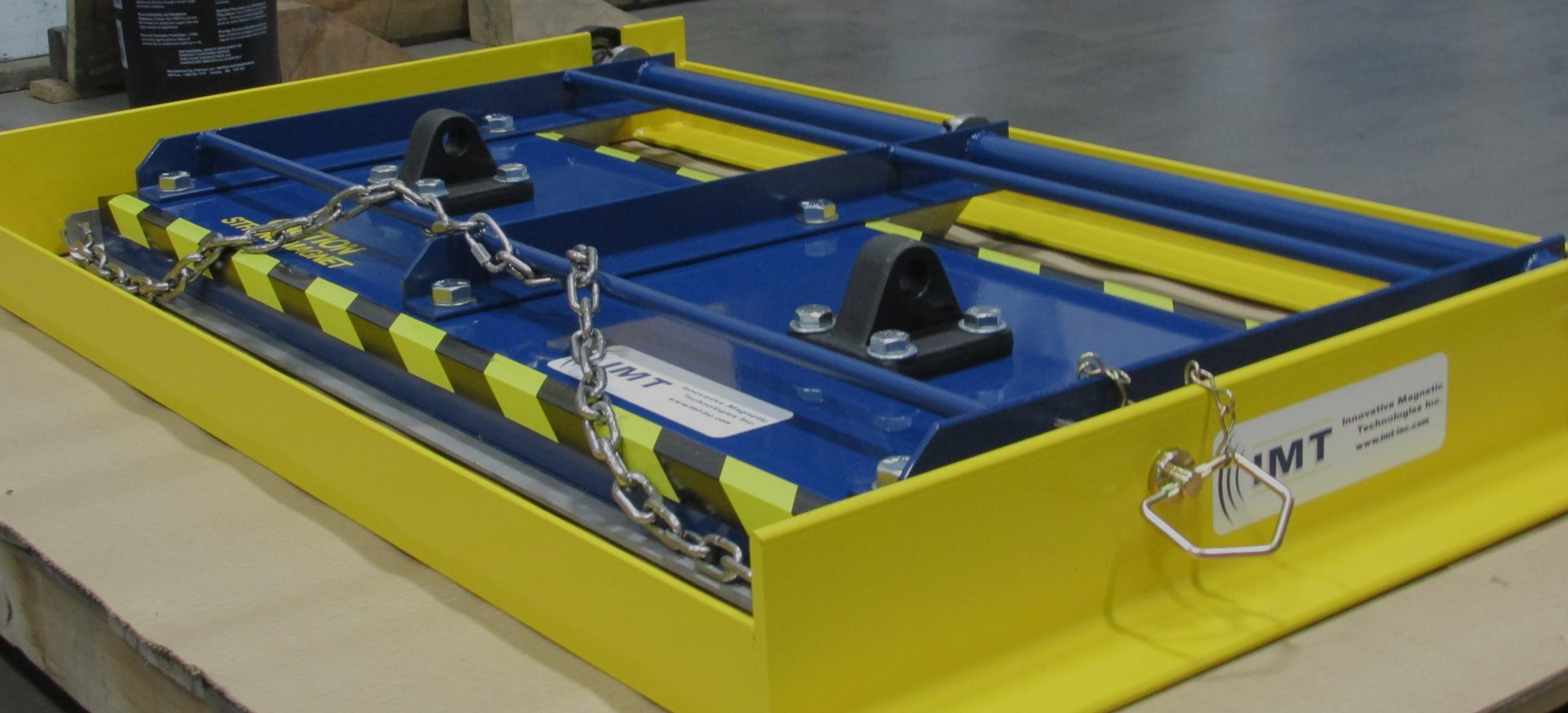How Lifting Magnets Work
The lifting magnet is a versatile work handling device that is capable of supporting a variety of ferrous materials, from small bundles of rod or scrap to large, heavy blocks.
Unlike slings and chains, lifting magnets can be used to lift loads that might otherwise require two or more people. By replacing slings and chains with lifting magnets, productivity can be improved.
What are Lifting Magnets?
As the name implies, lifting magnets are high-powered magnets used to lift objects. In addition to being portable, they make handling heavy objects easier.
The magnets are activated by placing the object on the magnets. Whenever the magnet is activated, it will hold a metal object so that the user can easily move it to the desired location.
Types of Lifting Magnets
Lifting magnets can be divided into two types:
- Permanent magnets
- Electromagnets
The permanent magnet is just that – a permanent magnet. The magnetic field is built up by using permanently magnetized material. On worksites, permanent magnets are generally turned on and off by a lever.
These types of lifters occupy little space and are easy to move from one work area to another in machine shops. A disadvantage of permanent magnets is that their lifting capacity is limited. Charged magnetic materials are held to magnet faces by electric current.
The electromagnetic field is created by leading particles within ferrous materials in a similar direction using an energized coil around a steel core. In general, electromagnets operate on DC, creating the need for rectifiers.
The power source of electromagnets is constant, which makes them different from permanent magnets. According to how the magnet is used, this can either be a disadvantage or an advantage.
Electric motors are susceptible to power failures, so battery backup systems and universal power supplies are available in today’s market to address these concerns. A permanent magnet, however, does not offer the same flexibility as applying a variable current.
How Lifting Magnets Work
Magnets used for lifting must have a good weight-bearing capacity and be powerful. These magnets are made with magnet materials such as iron alloys that are precisely configured and have all the required properties.
In addition, they need to be able to be turned on and off. The body and the rotor of a permanent lifting magnet are a single block.
Each magnet is surrounded by a rotor. Positioning these two magnets together produces a magnetic flux that can lift metallic objects when they are oriented in the same direction.
When the rotor is switched, the load is released because the magnetic field changes. To achieve optimum adhesion between the magnet and the object, the air between these objects should be as small as possible.
Steps to Operate a Lifting Magnet
Lifting and releasing loads with lifting magnets is easy in industries. As an operator, you will need to perform the following steps:
- It is a safety requirement that the operator adjusts the magnet to the correct position and moves away. The magnetic flux is the only thing that exists right now.
- When the ON button is pressed, electromagnetic energy is transferred from the rotor magnet to the one in the main body, which then lifts the objects. By doing so, the magnet can attract objects.
- Once the load is at its destination, it needs to be moved by the operator.
- To release the load in the right spot, the operator needs to press the OFF button.
- Since the load does not fall off immediately if the operator presses the OFF button while moving it, this is completely safe.
Bottom Line
Lifting magnetics are magnetic devices that are used for lifting, moving, and manipulating objects. By reducing worker injuries, they encourage improved productivity and create a safer workplace. These stacking and transferring devices are great for cleaning and stacking steel sheets, plates, bars, and angles. A utility lifter does not require slings, clamps, or chains.

